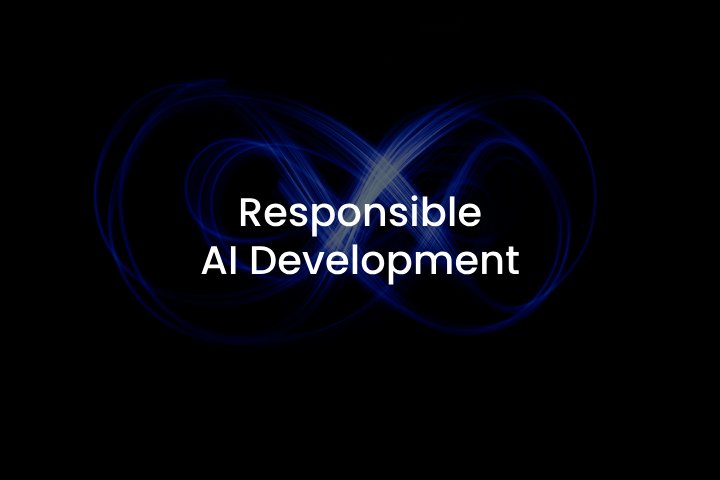
Responsible AI Development: Bias Detection and Mitigation Strategies
There is no doubt that Artificial Intelligence (AI) has changed our world forever. With all the benefits it provides to the organization from different business niches, significant issues of bias of different kinds are arising. Biases in AI models can cause discriminatory scenarios, resulting in inequality in society and undermining public trust in technology.
This article analyzes the challenges of bias in AI, approaches to bias detection, and presents mitigation strategies for AI development with equality in mind.
The Challenges of Bias in AI Models
Bias in AI models often crisscrosses with different sources, making it a complex challenge. To address the issue, we shall first single out the root of the problem.
Firstly, AI models are trained on the data they are provided. If this data reflects existing societal biases, the model will preserve them and take them as something regular. Therefore, the choice of data to train AI shall be made thoroughly.
Secondly, the algorithms used to train AI models can introduce biases. For instance, algorithms prioritizing efficiency might favor a group of males over a group of females in bank loan approvals for starting a business. Therefore, it can become impossible for women to access banking services simply because the AI engine was not properly trained and instructed. Or, for example, there is a face recognition engine that is biased against people of color. These scenarios highlight the importance of putting significant efforts into detecting and mitigating bias in AI development.
And, thirdly, the creators of AI engines can put their own biases into the design choices and evaluation processes.
How to Detect Bias in AI Engine?
As AI models become smarter and wittier, a complex approach shall be taken in order to detect bias and fix it. Among the key methods, we would like to single out the following:
- Data Analysis: Examining the training data for disproportion in demographics, various socioeconomic factors, gender or race belonging, etc. We recommend using statistical tests can help identify whether AI is trained improperly and can later show bias in its judgment.
- Fairness Metrics: Metrics like fairness, equality of opportunity, and discriminatory outcomes can be used to reveal the level of bias in the provided results. For example, analyzing loan approval rates across different genders can reveal bias.
- Human Evaluation: Experts can manually review model outputs to detect biases that might be missed by automated methods. This is particularly valuable in sensitive areas like criminal justice.
Using the above methods, development teams are provided with insights into potential bias and can fix the issues as soon as possible.
How to Mitigate the Impact of Bias in AI Development
If bias is detected in an AI engine, it is vital to do some intervention, and that’s where having bias mitigation strategies in place can help a lot. The key elements of bias mitigation in AI include:
- Data Augmentation is one of the best approaches for training AI models. It involves providing the training data with additional information to balance representation. Techniques include oversampling underrepresented groups or generating synthetic data that reflects the desired demographics.
- Fairness-aware Algorithms are designed to consider fairness during training. They include techniques where a separate model tries to identify and counteract biases in the main model.
- Explainable AI (XAI) aims to make AI models more understandable and clear. This way developers can understand how the model comes up to certain decisions and detect potential bias sources within the algorithms themselves.
- Human-in-the-Loop (HITL) Systems allow the integration of human oversight into AI systems, therefore, helping to address biases that might be missed by automated methods and approaches. A person can interfere when the model’s output is questionable, hence, providing a fairer decision-making process.
Combining these strategies can result in reducing or even removing bias from AI models. This way, humans all over the world can continue benefiting from AI adoption, regardless of their ethnicity, race, age, gender, socioeconomic background, etc.
Building a Culture of Responsible AI Development
Mitigating bias goes way beyond technical solutions. A cultural shift towards responsible AI development is crucial. As the modern world is moving toward more equality and open-mindedness, building diverse and inclusive AI teams helps to identify and challenge biases from different perspectives.
Besides diversity, we shall establish clear ethical guidelines for AI development to ensure that fairness and inclusivity are considered throughout the process. Also, implementing strong bias detection and mitigation measures throughout the AI model lifecycle is essential for the future.
Summary
Building trust in AI requires addressing the challenge of bias. By applying a complex of detection methods and mitigation strategies, developers can create fairer AI systems. Moreover, fostering a culture of responsible AI development, with a focus on diversity and continuous monitoring, is paramount. As AI continues to change our world, making sure its fairness and responsible use becomes more critical than ever.
If you have any further questions regarding AI adoption and how your organization can benefit from it, contact us and our experts will get back to you.


